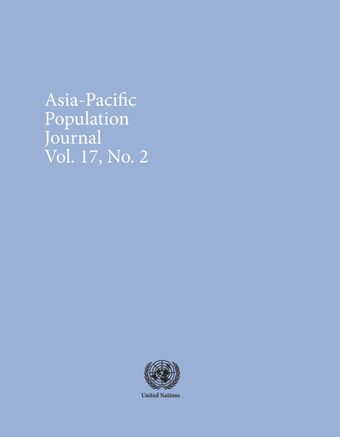-
The effect of social interaction on fertility goals and behaviour among women in Bangladesh
- Source: Asia-Pacific Population Journal, Volume 17, Issue 2, Jul 2002, p. 87 - 110
-
- 08 Jul 2002
Abstract
Until recently, much of the literature concerning population issues in Bangladesh has stressed the presence of conditions that would inhibit a fertility transition — limited opportunities for women in the job market, son preference (Lindenbaum, 1975), the value of children for ameliorating risk (Cain, 1986) and providing familial labour (Caldwell, 1982), the poorly managed national family planning programme (Hartman, 1987), and high infant mortality. Bangladesh is still largely impoverished and agricultural, infant mortality is still high, education levels among women of reproductive age remain low and traditional cultural institutions strong. Yet in this unlikely setting, the total fertility rate has declined from around seven in the late 1970s to well under four in 1994. The fertility transition in Bangladesh was achieved almost exclusively through the use of birth control methods (modem and traditional), with use increasing dramatically from 8 per cent in 1975 to 45 per cent in 1994. Since that time, fertility has remained constant, while contraceptive use has increased to 53 per cent. (Razzaque and others, 2002).





